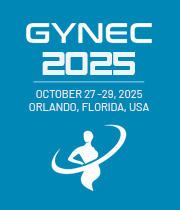Title : Streamlining PCOS identification: A user-friendly AI tool for early screening
Abstract:
Objective: Polycystic ovary syndrome (PCOS) affects up to 20 percent of women of reproductive age and carries risks for metabolic, reproductive, and psychological complications. Yet, its diagnosis often requires multiple visits and complex examination, delaying targeted management. To overcome these barriers, we developed two streamlined predictive models—PCOS-4 and a minimal PCOS-3—integrated into a user-friendly online screening platform suitable for both clinical and community settings.
Methods: From a retrospective cohort of 21,219 ovarian stimulation cycles at Peking University Third Hospital (January–December 2018), ten candidate variables were evaluated, and LASSO-penalized logistic regression with cross-validation retained four key predictors: AMH, the upper limit of menstrual cycle length (UML), BMI, and androstenedione. The full PCOS-4 model incorporates all four variables, while the pared-down PCOS-3 model leverages only AMH, UML and BMI. Discrimination (AUC), calibration, and net reclassification index (NRI) were evaluated across independent training, validation, and testing subsets.
Results: PCOS-4 demonstrated excellent discrimination with AUCs of 0.855 (95 % CI: 0.838–0.870), 0.848 (0.791–0.891), and 0.846 (0.812–0.875) in the training, validation, and testing cohorts, respectively. The PCOS-3 model achieved nearly identical performance (AUCs: 0.850 [0.842–0.858]; 0.851 [0.828–0.874]; 0.841 [0.826–0.856]). Although PCOS-3 showed a slight reduction in NRI in the training set (NRI = –0.022; 95 % CI: –0.035 to –0.009), its NRI in the test set remained neutral (0; –0.023 to 0.023), indicating no meaningful loss of clinical utility.
Conclusions and Potential Applications: By combining readily obtainable measures, these models enable rapid, accurate identification of high-risk PCOS cases. Crucially, the streamlined PCOS-3 requires only a single AMH measurement and available characteristics, minimizing patient burden and resource needs. This simplicity facilitates deployment in low-resource clinics, telehealth services, and large-scale community screenings. Early detection via this online tool can prompt timely lifestyle and therapeutic interventions, reduce long-term complications, and markedly improve health outcomes for women living with PCOS.



